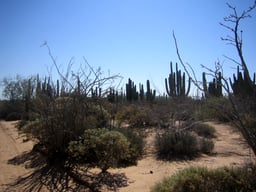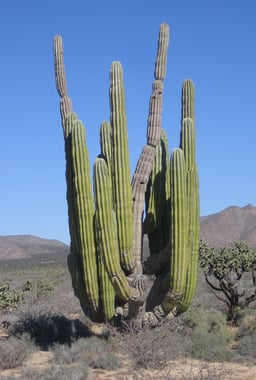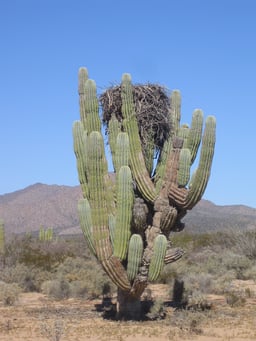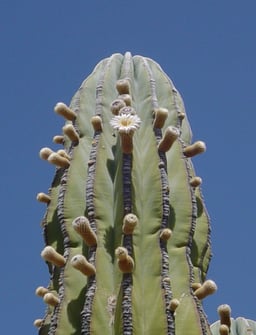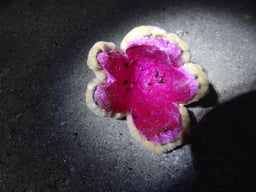Pachycereus pringlei
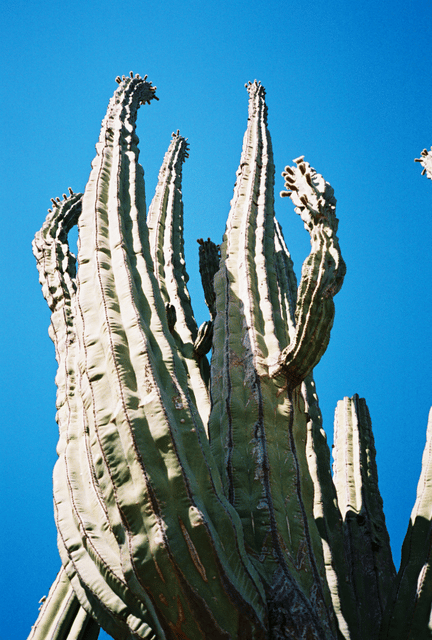
Pachycereus pringlei

| Pachycereus pringlei | |
|---|---|
| Pachycereus pringlei in Baja California, Mexico | |
| Scientific classification | |
| Kingdom: | Plantae |
| (unranked): | |
| (unranked): | Eudicots |
| (unranked): | Core eudicots |
| Order: | Caryophyllales |
| Family: | |
| Genus: | Pachycereus |
| Species: | P. pringlei (ቆልቋል kolkal) |
| Binomial name | |
| Pachycereus pringlei (S.Watson) Britton & Rose | |
| Synonyms | |
| Cereus pringlei S.Watson[1] | |
Large stands of this cactus still exist, but many have been destroyed as land has been cleared for cultivation in Sonora.
The fruit of this cactus was an important food for the Seri people in Sonora, who call the cactus xaasj.[3]
The flesh of this cactus contains alkaloids, and may have been used as a psychoactive plant in Mexico.[4]
A symbiotic relationship with bacterial and fungal colonies on its roots allows P. pringlei to grow on bare rock even where no soil is available at all, as the bacteria can fix nitrogen from the air and break down the rock to produce nutrients. The cactus even packages symbiotic bacteria in with its seeds.[5][6][7]
| Pachycereus pringlei | |
|---|---|
| Pachycereus pringlei in Baja California, Mexico | |
| Scientific classification | |
| Kingdom: | Plantae |
| (unranked): | |
| (unranked): | Eudicots |
| (unranked): | Core eudicots |
| Order: | Caryophyllales |
| Family: | |
| Genus: | Pachycereus |
| Species: | P. pringlei (ቆልቋል kolkal) |
| Binomial name | |
| Pachycereus pringlei (S.Watson) Britton & Rose | |
| Synonyms | |
| Cereus pringlei S.Watson[1] | |
Morphology
fewer ribs on the stems
more heavily branched
branching occurs nearer the base of the stem
areoles and spination differ
the location of the blossoms, lower along the stem
fruit heavily spiny
Its flowers are white, large, nocturnal, and appear along the ribs as opposed to only apices of the stems.
Lifespan and growth
An average mature cardon may reach a height of 10 metres (30 ft), but individuals as tall as 18 metres (60 ft) are known.[10] It is a slow-growing plant [11] with a lifespan measured in hundreds of years, but growth can be significantly enhanced in its initial stages by inoculation with plant growth-promoting bacteria such as Azospirillum species.[12][13][14] Most adult cardon have several side branches that may be as massive as the trunk. The resulting tree may attain a weight of 25 tons.[15]
